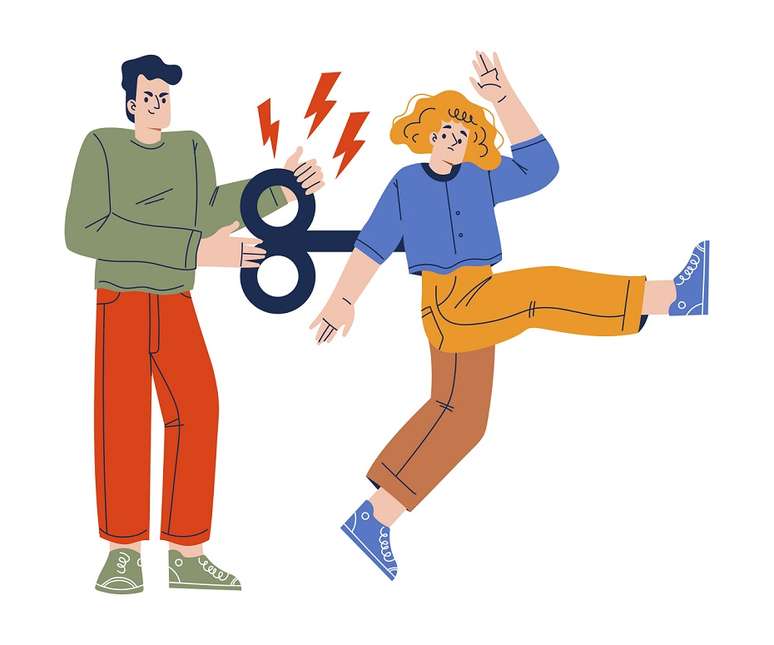Narcissists often use gaslighting as a form of manipulation
If you know a narcissist, you’ve probably noticed how people with this personality disorder attack or belittle others, using a type of subtle violence known as gaslighting.
For those who don’t know, gaslighting is a form of abuse, or manipulation, that can make you question reality or your own sanity. Over time, this can lead to low self-esteem, feelings of worthlessness, and other negative effects.
Anyone can perpetrate gaslighting. But this tactic is often used by people with narcissistic personality disorder (NPD), sometimes to cause doubt or gain an advantage in an argument. Additionally, people who have never received this diagnosis but display narcissistic traits may also engage in gaslighting behaviors.
Knowing how to recognize both gaslighting and the characteristics of a narcissist can be useful in protecting yourself from this type of violence.
Narcissistic gaslighting
It is a form of emotional abuse that a person with narcissistic personality disorder may use to gain power and control over another. This type of abuse can cause those who experience gaslighting to question their feelings, their sanity, and their instincts.
Characteristics of a narcissist
Many people can show signs of narcissism without being diagnosed with NPD. For a person to be diagnosed, they must have at least five of the following characteristics:
– is preoccupied with fantasies of power, brilliance, success, beauty or perfect love
– has a grandiose sense of self-importance, such as exaggerating accomplishments or expecting recognition as superior without completing an accomplishment
– requires excessive admiration
– has a lack of empathy and an unwillingness to identify with the needs of others
– believes she is “special” and can only be understood by other “special” people.
– is jealous of others or believes that others are jealous of you
– shows arrogant or haughty attitudes and behaviors
– has a sense of entitlement, such as an unreasonable expectation of favorable treatment
– Takes advantage of others to achieve one’s own ends or is exploitative
A person with NPD may not engage in physically violent behavior, but may be emotionally abusive to get their needs met. Gaslighting a domestic partner can get you what you want: feeling special and having power over the other person.
But be careful: not all abusers live with mental health problems or personality disorders. Likewise, not all people with NPD use gaslighting or other forms of abuse against their partners.
Examples of narcissistic gaslighting
Gaslighting can take many forms. Some common types include the following:
1. Counterattack – the response occurs when the attacker questions your memories, even when you are sure you remember them correctly. Example: “Your memory is always terrible, I never told you.”
2. Conservation – it is a technique in which the attacker does not listen to you or pretends not to understand what you say. Example: “I don’t want to talk to you about it anymore.”
3. Block or bypass – occurs when the abuser questions your thoughts or changes the subject to avoid talking about it anymore. Example: “It doesn’t seem like anything could happen, are you sure you can’t imagine it?” or “It’s too late, let’s not talk about it now.”
4. Forgetfulness or denial – Another common gaslighting technique is to “forget” what happened or deny things, such as promises made or something said. Example: “I don’t remember any of this” or “You’re just making it all up to make me look bad.”
5. Intermittent reinforcement – describes a cycle in which one moment provides you with affirmation and then makes you feel small or bad about yourself at another moment. The bully may make you want moments where he praises you, even if he treats you badly most of the time. Example: “You are really beautiful!” “You wear too much makeup. You look like shit when you do it.”
6. Trivialization – this involves making your feelings or opinions seem unimportant or irrelevant. Example: “It was just a joke, don’t be so sensitive” or “Really? You’re getting so angry over nothing!
7. Blatant lies – a bully can simply lie to your face without showing any sign of what they are doing. Over time, this can make you question whether everything they are saying is true.
How to recognize
Narcissistic gaslighting can be difficult to recognize, especially if you live with a partner who uses it against you. One way to help you determine whether you, a friend, or a family member is experiencing gaslighting is to look for signs in yourself or others that may indicate this form of abuse.
Some signs to look out for include:
– Ask yourself if you are too sensitive or insecure
– Having difficulty making simple decisions
– Constantly question yourself
– Become more withdrawn or antisocial
– Defend your attacker’s behavior
– I am confused
– Feeling useless, joyless, incompetent or hopeless
– Constantly apologize to your abuser
– Lying to friends or family about your relationship
Experiencing or noticing any of these signs does not necessarily mean that your partner is abusive. But if you find that you identify with one or more, try talking to a trusted friend, therapist, or family member. They can provide more information about what is happening and help you understand how to deal with the situation.
Next steps
Gaslighting can make you, a friend or family member feel small, insignificant or have low self-esteem. This happens intentionally. People with NPD want you to feel insecure about your thoughts and feelings. For a person like this, gaslighting can give a feeling of power over you, reinforce the need for superiority, and make you more dependent on them.
If you recognize signs of this type of abuse in yourself, reach out to trusted family or friends. They can help and provide support. You can also contact a mental health professional. It can help you understand what is going on and provide support for your needs.
Source: Psych Central
Source: Terra
Ben Stock is a lifestyle journalist and author at Gossipify. He writes about topics such as health, wellness, travel, food and home decor. He provides practical advice and inspiration to improve well-being, keeps readers up to date with latest lifestyle news and trends, known for his engaging writing style, in-depth analysis and unique perspectives.





![Plus Belle La Vie Adher: What awaits you, on August 27, 2025 on Wednesday, Wednesday, 407 episode [SPOILERS] Plus Belle La Vie Adher: What awaits you, on August 27, 2025 on Wednesday, Wednesday, 407 episode [SPOILERS]](https://fr.web.img6.acsta.net/img/e9/fc/e9fca61f1a49ef45be5d4fef9be64ede.jpg)



